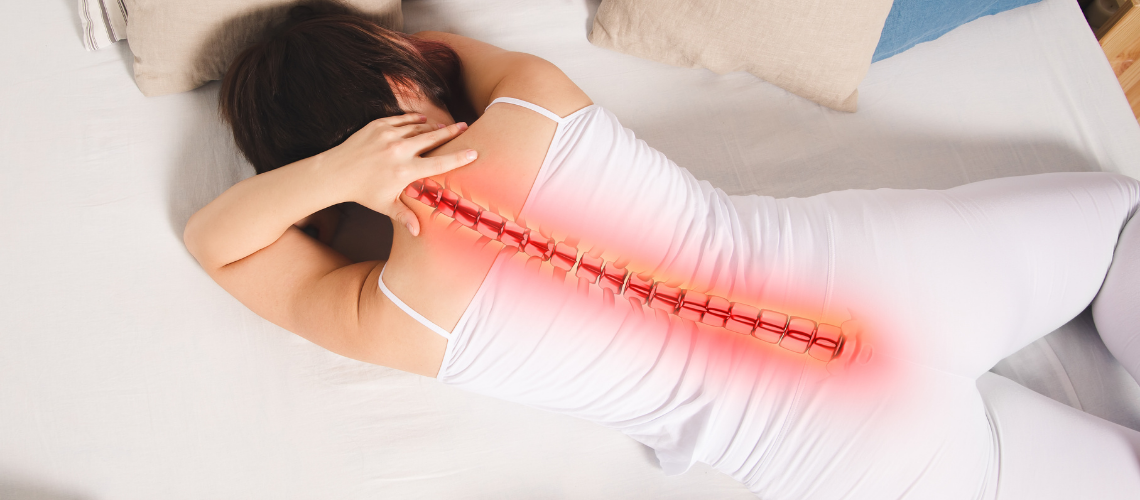Many have heard the phrase “I’ve thrown my back out.” – usually when asking a friend to help with a move or as a last-minute social cancellation. However, in all seriousness, to “throw” one’s back out is an acutely painful incidence. It usually refers to an acute onset of low back pain in the lumbar region of the spine – below the ribs but just above the pelvis. A common misconception is the vertebrae or bones are moving out of place, however, it’s more likely that there is a muscle spasm or, in most cases, the patient has strained or sprained the muscles of their back. In rarer cases, the result is a sudden disc injury.
According to a study, at least 80 percent of the US population will experience lower back pain at some point in their lives – no matter their occupation. Acute back pain can happen to anyone at any time – though it is more common with increasing age. Usually a temporary situation, lower back pain tends to be either a simple sprain or strain of the low back.
Causes include lifting heavy objects, bending forward awkwardly, twisting the back (as in golfing), stretching back too far, and poor posture. Excess body weight and smoking also contribute as smoking keeps the body from distributing nutrients to the spinal discs. People prone to anxiety and depression also have an increased risk of lower back pain. These injuries usually involve the ligament, muscles, connective tissue, and blood vessels of the lumbar region. Even a minor injury can result in small tears in the vertebral discs and nerves which can lead to pain and inflammation.
As mentioned, “throwing the back out” is often a temporary injury, and a trip to the emergency room is usually not needed. According to the American Association of Neurological Surgeons, 90 percent of people with lower back strain or sprain recover from the injury within a month. These injuries also respond well to over-the-counter anti-inflammatory medicines such as Ibuprofen. The optimum treatment is to rest while lying on a flat surface and icing the affected area.
If, after a few days of rest, mobility hasn’t returned and the pain is still sharp, it’s best to make an appointment with a spine specialist. Leon Anijar, MD, at his new South Beach location, can provide patients with a holistic approach to treating this common injury.
A key to avoiding acute back sprains and strains is prevention. Patients who keep their backs and core muscles healthy and strong are less likely to experience these injuries. Patients are encouraged to:
- Exercise: low-impact aerobic activities increase both endurance and strength in the lower back region.
- Daily walking can help patients as walking targets the muscles of the abdomen and back – similarly to exercises that work these areas.
- Slow and controlled movements such as stretching and yoga have shown to be beneficial in strengthening the back.
- Maintain a healthy weight.
Additionally, learning to use proper body mechanics while lifting, standing with appropriate posture, and sitting in chairs that provide ample lower back support can also result in being less injury-prone.
Backed by the most advanced technology and cutting-edge treatment programs, Dr. Anijar and his team approach to patient care can result in quicker recovery no matter the circumstances.
A diagnosis will be made based on history, symptoms, and physical examination The physician will order imaging studies and other tests allowing Dr. Anijar to evaluate and perform an in-office exam to determine the root cause. Whatever the outcome, Dr. Anijar, at his new state-of-the-art Spine and Wellness Centers of America (SWCA) facility, will bring a multidisciplinary approach so that each injured patient receives their own customized, comprehensive treatment plan.


